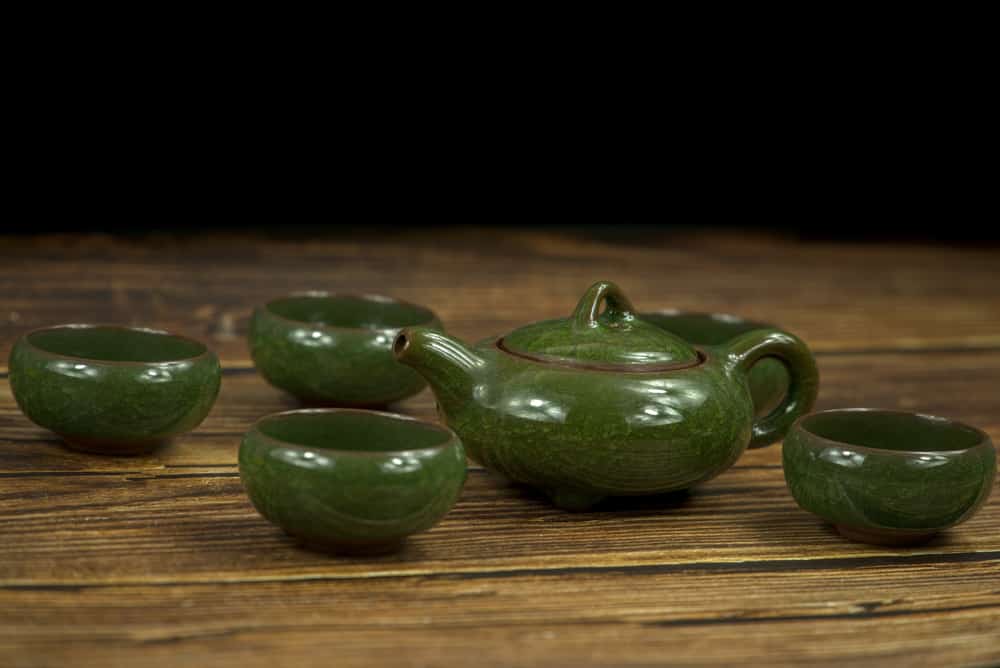
With tea being the most consumed beverage around the world, it is needless to say that people are extremely particular about the tea sets. Ranging from Japanese tea to Chinese tea, both of them have a long history and are known to have a delicious flavor. However, using the right cups and saucers is important for people who are careful about eating etiquette. So, to help you select the right tea set, we have a Chinese vs Japanese tea set evaluation in this article!
Chinese vs Japanese Tea Set
Japanese Tea Set
When it comes down to the Japanese tea sets, the sizes and shapes of the cups and teapots have changed over the course of time. The tea set’s teapots are made either from porcelain or clay (yes, it is stoneware). The porcelain pots are more versatile when it comes down to the brewing capacity because it does not absorb the tea’s aroma. As far as the clay teapots are concerned, they add a mellow taste to the tea – they also add umami notes. This is because clay teapots have a higher iron content, which reacts to the tea leaves’ tannins.
There are four shapes of teapots in Japanese tea sets but the major difference lies in the handle’s design. For instance, the side-handled pot (yokode kyusu) has one handle on the side and prevents the falling of the lid while the back-handled pot (ushirode kyusu) has a handle on the teapot’s back and is used for English and Chinese tea. Moreover, there is a top-handle pot (dobin) that has a handle made from bamboo but you can also find the no-handle teapot (it is only suitable for green tea).
The teapots are designed with metal as well as clay filters. The clay filters are usually integrated into the teapot and are made from the same material as the pot. The clay filters promise full steeping in water but it needs more care. On the other hand, there is a metal filter as well, which is easier to clean. The Japanese tea sets include a cooling cup (it doesn’t have a lid) with a side or back handle. Some of these cooling cups also have pour sprouts.
As far as the teacups are concerned, they are made from glass, clay, or porcelain materials. Porcelain teacups are most common in Japan as they are lightweight and thin. On the other hand, the clay teacups are known for the glazed design while the glass tea cups are perfect for iced teas. Last but not least, the teacups are available with tapered sides and straight sides, and some cups have lids as well.
Chinese Tea Set
When it comes down to China, there is a variety of tea sets available with different aesthetics, practical value, and styles. In most cases, the tea sets are designed with teaspoons, a fair cup, a tea clip, a tea tray, a cupped bracket, a kettle, a teapot, a smelling cup, and teacups. The tea sets are designed in purple sand, glass, and porcelain materials. The use of different materials depends on the type of tea and ceremony. For instance, the green tea is brewed and served in glass cups as they help release flavor while the black tea is served in porcelain cups.
The teapots are designed in stone, glass, purple sand, and porcelain materials but the purple sand material is the most popular. That’s because this material promises slower thermal conductivity, top-notch insulation, and improved breathability. As far as the shape is concerned, there are different shapes available while round teapots are widely used as it promises a better release of flavor.
The Chinese tea sets are designed with glass, purple sand, or porcelain teacups, and traditionally, the tea sets have six or eight teacups. Depending on which set you choose, it could come with covers and holders. A fair cup is a unique addition to tea sets and is designed with a bigger capacity and wider opening – it is used for shaking the tea water before it’s poured into the teacups.
The fragrance-smelling cup in the tea set has a narrow opening with a slender body while the kettle is available in stainless, iron, and pottery materials. The best thing about Chinese tea sets is that they offer a full-range experience as the tea trays are also provided – they are made from plastic, bamboo, or wood.
The bottom line is that the Chinese tea sets have more pieces and accessories to offer a better tea-making and serving experience!